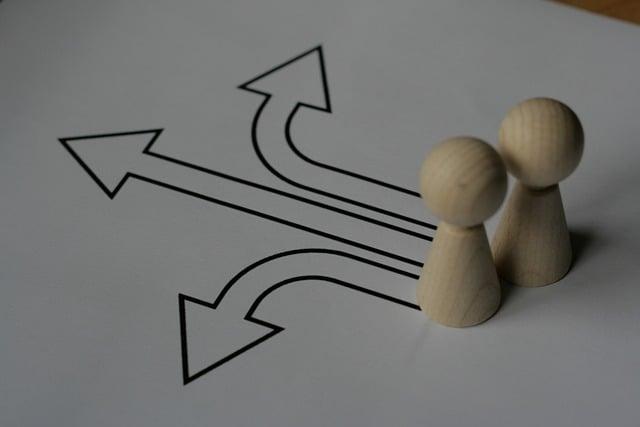In a small town, a woman named Clara discovered a dusty box of old greeting cards in her attic. Each card, adorned with heartfelt messages and whimsical illustrations, told a story of connection. As she read them, Clara realized that these simple tokens held the power to evoke emotions, bridge distances, and celebrate moments. The psychology behind greeting cards lies in their ability to convey feelings that words alone often cannot. They serve as tangible reminders of love, support, and shared memories, weaving the fabric of human relationships.
Table of Contents
- The Emotional Connection: How Greeting Cards Foster Relationships
- The Science of Sentiment: Understanding the Psychological Impact of Written Words
- Crafting the Perfect Message: Tips for Personalizing Your Greeting Card
- The Role of Rituals: Celebrating Lifes Moments Through Card Giving
- Q&A

The Emotional Connection: How Greeting Cards Foster Relationships
Greeting cards serve as tangible tokens of affection, bridging the gap between individuals and nurturing emotional bonds. When someone receives a card, it’s not just the words that resonate; it’s the thoughtfulness behind the gesture. This act of sending a card can evoke feelings of warmth and appreciation, reinforcing connections that might otherwise fade in the hustle of daily life. The personal touch of a handwritten note or a carefully chosen message can make the recipient feel valued and understood, creating a lasting impression that strengthens relationships.
Moreover, the psychology of greeting cards taps into the human need for recognition and belonging. When we send or receive a card, we engage in a ritual that signifies care and consideration. This exchange can lead to a variety of positive emotions, including joy, nostalgia, and gratitude. Key elements that enhance this emotional connection include:
- Personalization: Tailoring a card to reflect the recipient’s personality or shared memories adds depth to the gesture.
- Timeliness: Sending a card for special occasions or even just to say “I’m thinking of you” can significantly impact how relationships are perceived.
- Visual Appeal: The design and aesthetics of a card can evoke emotions and memories, making the experience more memorable.

The Science of Sentiment: Understanding the Psychological Impact of Written Words
The written word possesses a remarkable ability to evoke emotions and shape perceptions, particularly in the context of greeting cards. When someone receives a card, the carefully chosen words can resonate deeply, often triggering memories or feelings associated with the sender. This phenomenon is rooted in the psychological principle of **emotional contagion**, where the emotions expressed in writing can influence the recipient’s mood. The act of reading a heartfelt message can create a sense of connection, reinforcing relationships and fostering a sense of belonging. The tactile experience of holding a card, combined with the visual appeal of its design, further enhances this emotional engagement.
Moreover, the psychology behind greeting cards extends to the concept of **symbolic interactionism**, where the meanings attached to words and gestures play a crucial role in human interactions. Greeting cards serve as tangible symbols of care and thoughtfulness, often encapsulating sentiments that might be difficult to express verbally. This is particularly evident during significant life events, such as birthdays, weddings, or condolences, where the right words can provide comfort or joy. The anticipation of receiving a card, along with the act of selecting one for a loved one, reflects a deeper understanding of social bonds and the importance of communication in nurturing those connections.

Crafting the Perfect Message: Tips for Personalizing Your Greeting Card
When it comes to crafting a message that resonates, personalization is key. A well-thought-out greeting card can evoke emotions and strengthen connections. To make your message stand out, consider the recipient’s personality and preferences. Reflect on shared memories or inside jokes that can add a personal touch. Here are some tips to enhance your message:
- Use their name: Addressing the recipient directly creates a sense of intimacy.
- Share a memory: Recalling a special moment can evoke nostalgia and warmth.
- Express genuine feelings: Authenticity resonates more than generic phrases.
- Include a quote: A meaningful quote can encapsulate your sentiments beautifully.
Additionally, consider the occasion and tailor your message accordingly. Whether it’s a birthday, anniversary, or a simple note of encouragement, the tone should reflect the significance of the event. A light-hearted joke might be perfect for a friend, while a heartfelt message may be more suitable for a family member. Here are some strategies to refine your approach:
- Match the tone: Ensure your message aligns with the occasion—joyful for celebrations, comforting for difficult times.
- Be concise: A few well-chosen words can often convey more than lengthy paragraphs.
- Handwrite your message: A handwritten note adds a personal touch that digital messages lack.
- End with a personal sign-off: A unique closing can leave a lasting impression.

The Role of Rituals: Celebrating Lifes Moments Through Card Giving
Rituals serve as a powerful means of connecting individuals to significant life events, and card giving is a cherished practice that embodies this connection. Whether it’s a birthday, wedding, graduation, or even a simple “thinking of you,” the act of selecting and sending a card transforms a fleeting moment into a lasting memory. This ritual not only acknowledges the occasion but also reinforces social bonds, allowing the sender to express emotions that words alone may fail to convey. The tactile nature of a card, combined with the personal touch of handwritten messages, creates a tangible reminder of shared experiences and sentiments.
Moreover, the psychology behind card giving reveals deeper layers of meaning. Engaging in this ritual can evoke feelings of **belonging**, **appreciation**, and **love**. Recipients often feel valued and recognized, which can enhance their emotional well-being. The act of giving a card can also provide the sender with a sense of purpose and fulfillment, as they contribute to the happiness of others. In essence, card giving becomes a ritualistic celebration of life’s milestones, fostering connections that transcend time and distance. This simple yet profound gesture encapsulates the essence of human relationships, reminding us of the importance of celebrating each other’s journeys.
Q&A
-
Why do people send greeting cards?
Greeting cards serve as a tangible expression of emotions and sentiments. They allow individuals to:
- Connect with loved ones
- Celebrate special occasions
- Offer support during difficult times
-
What psychological benefits do greeting cards provide?
Sending and receiving greeting cards can enhance emotional well-being by:
- Fostering feelings of belonging and connection
- Boosting mood through positive messages
- Encouraging mindfulness and reflection
-
How do greeting cards impact relationships?
Greeting cards can strengthen relationships by:
- Demonstrating thoughtfulness and care
- Creating shared memories and experiences
- Facilitating open communication and emotional expression
-
What role does personalization play in greeting cards?
Personalization enhances the emotional impact of greeting cards by:
- Making the recipient feel valued and special
- Reflecting the sender’s unique relationship with the recipient
- Encouraging deeper emotional connections
In a world where digital messages reign, greeting cards remain a tangible expression of our emotions. They bridge distances, encapsulate sentiments, and remind us of our shared humanity. Next time you send one, remember: it’s more than just paper; it’s a heartfelt connection.

大家好,我是彼得潘,專業的手法身體治療師。我喜歡探索和研究各種主題,並透過與人工智慧的合作分享專業、實用、有趣的文章。我們定期進行人工審核,以確保內容的準確性。如果您發現文章中有任何不準確的地方,請隨時與我們聯繫,我們會及時糾正。您可以透過 [email protected] 與我們聯繫。



